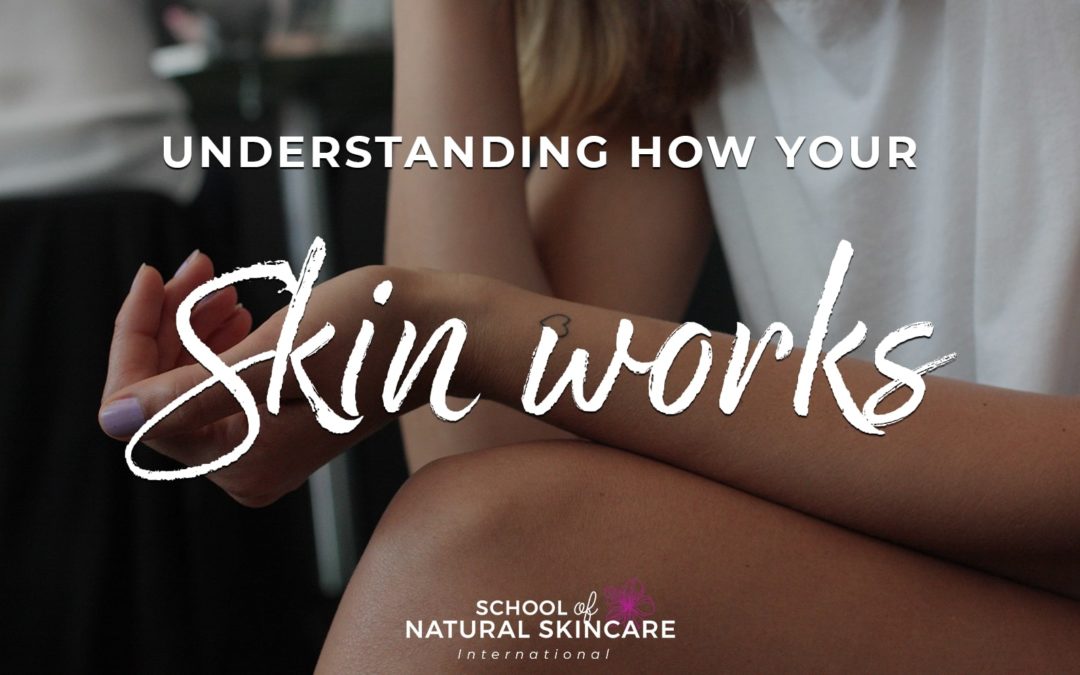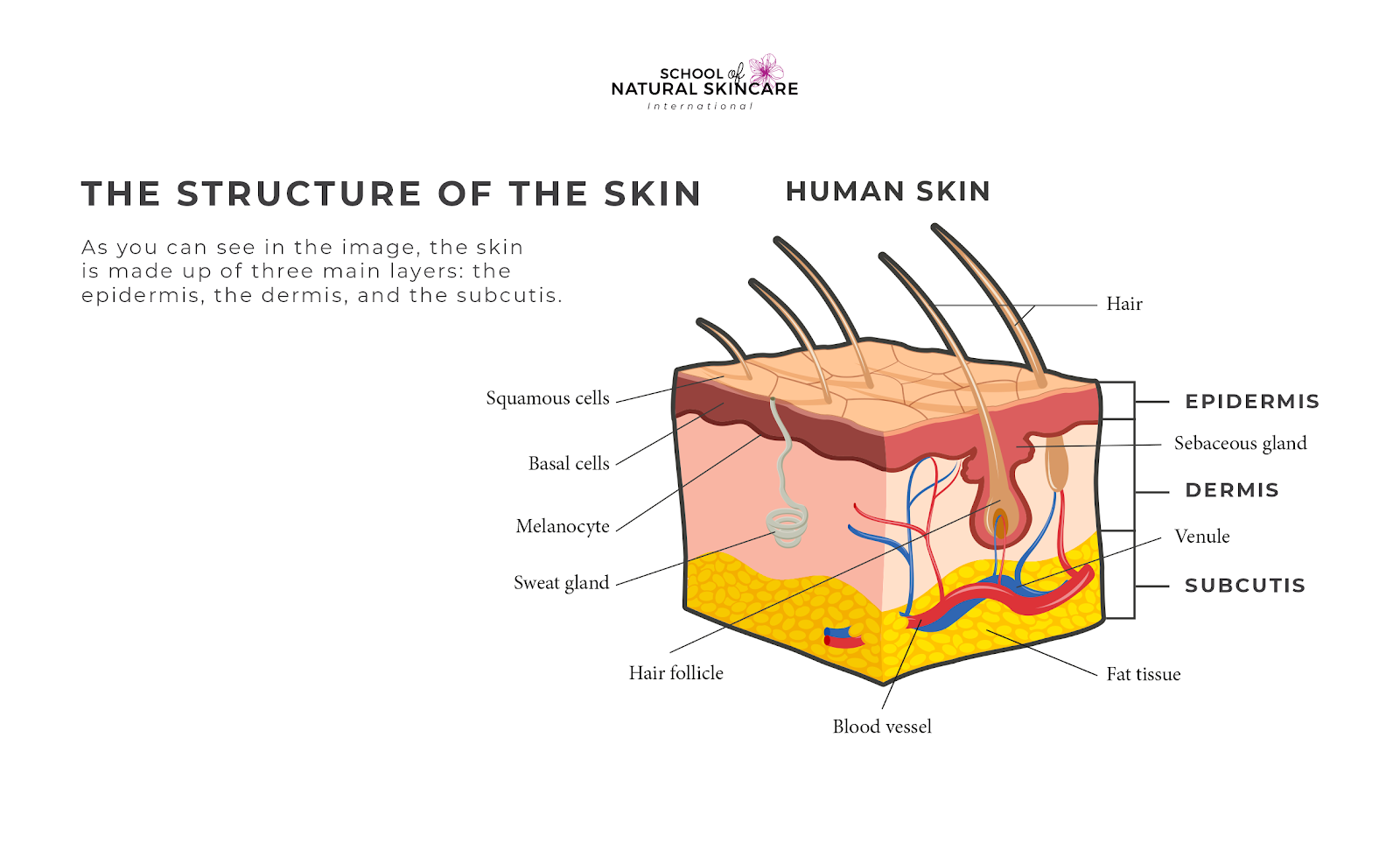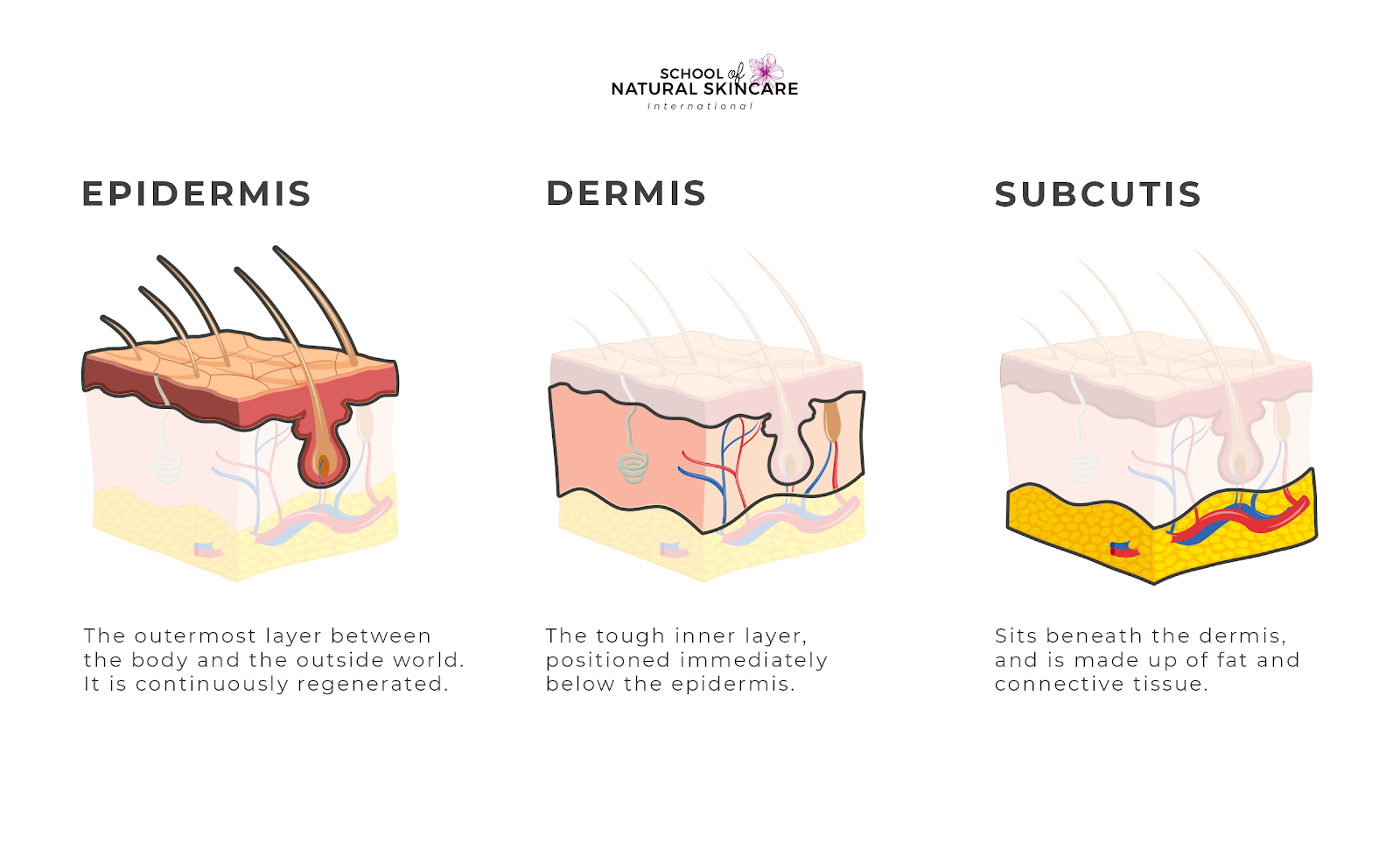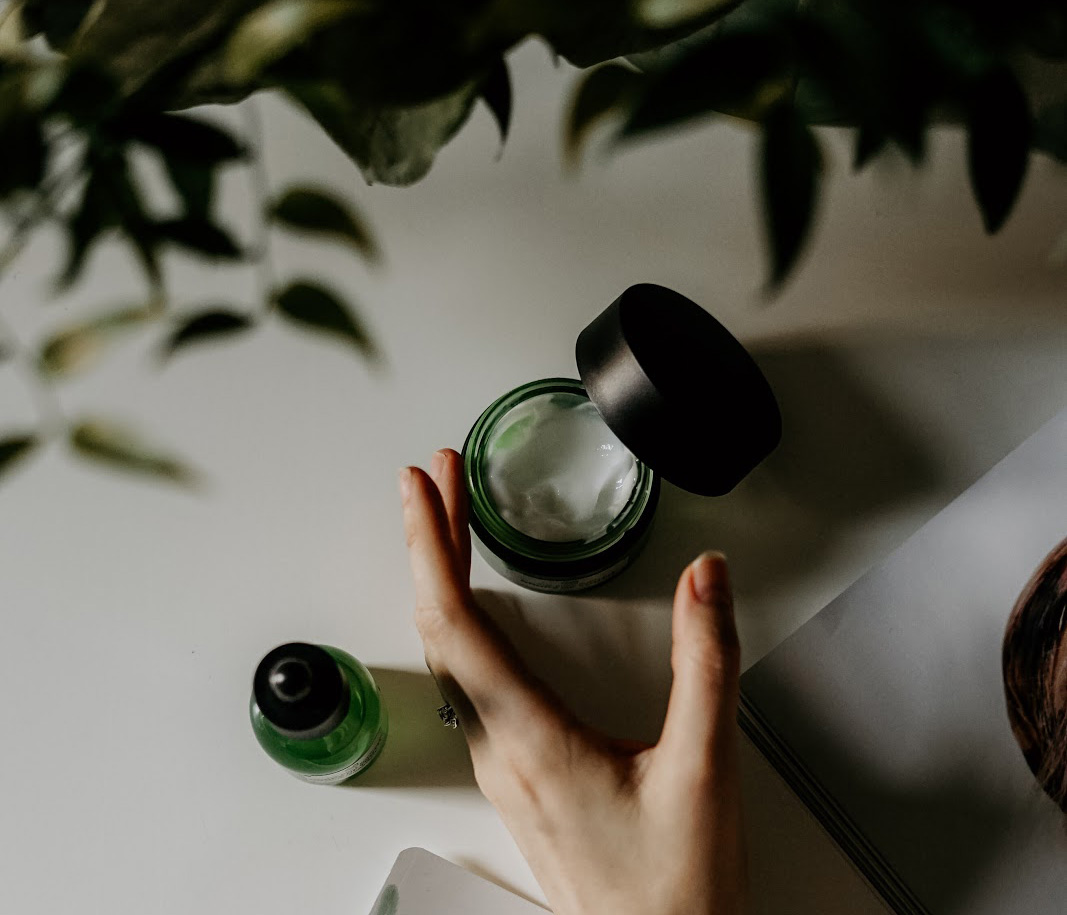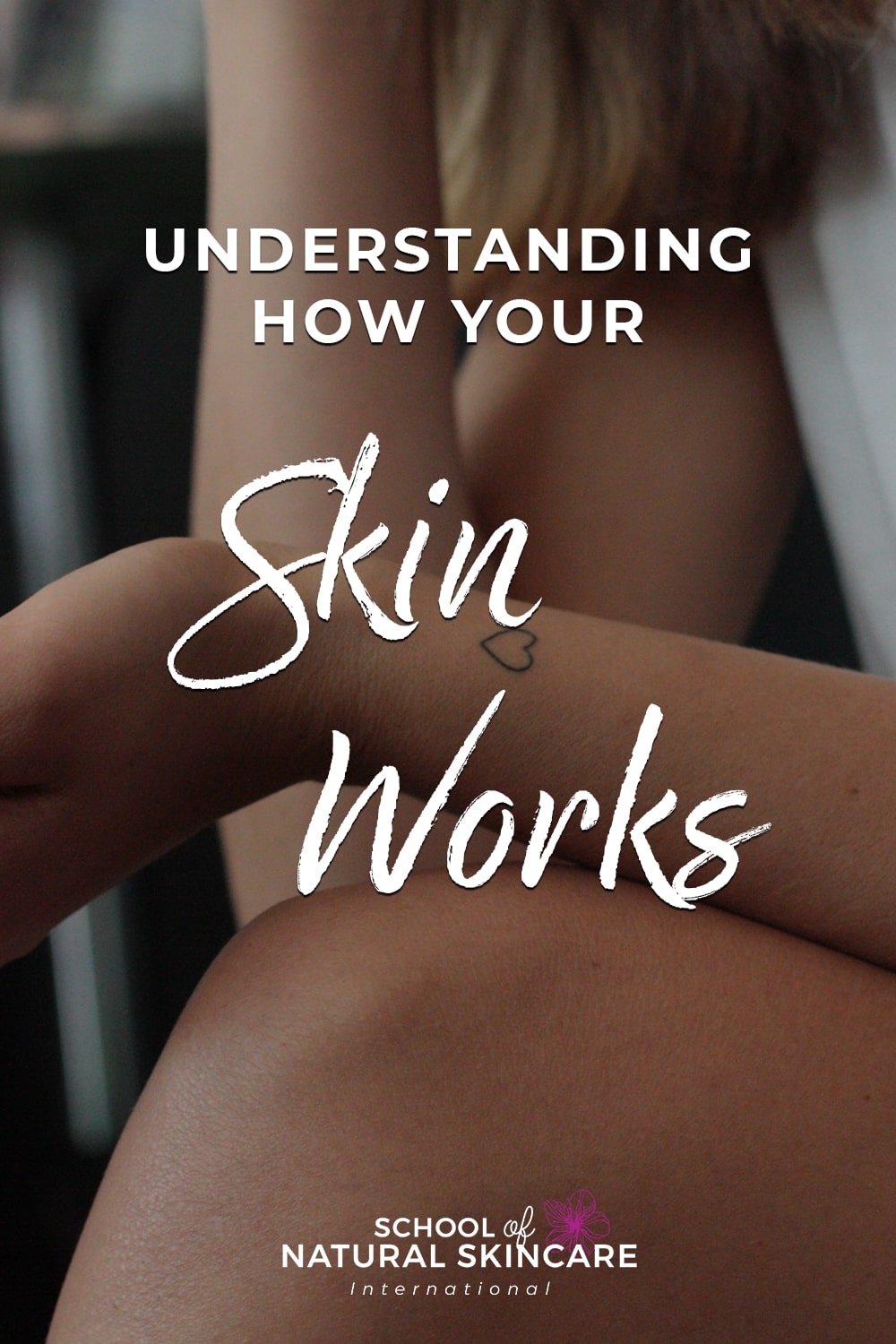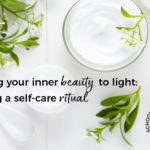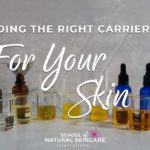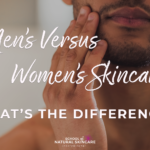Your skin is amazing.
It’s a constantly changing, dynamic and adaptable living organ. It can adapt in an instant, responding to differences in the environment, temperature and light. It is highly sensitive to heat, vibration, movement and pressure, and it protects us – from bumps and cold weather, to microorganisms and ultraviolet radiation.
Our skin keeps us alive and keeps us healthy.
So how does your skin actually work? What does it do? And how can you take the best possible care of your amazing skin?
What your skin does for you
There are a series of crucial functions, vital to life, which your skin is responsible for:
- Preventing water loss.
- Protecting against harmful ultraviolet radiation.
- Cushioning against bumps and shocks.
- Keeping out microorganisms like bacteria, particles and chemicals.
- Producing Vitamin D.
The structure of your skin
The skin is structured into three main layers. Starting from what you can see, the outermost layer is called the epidermis. Below that is the dermis and finally, underneath them all is the subcutaneous fatty layer.
The epidermis
This is the outermost layer of skin, the skin that you can see. There are a number of layers of skin in the epidermis and each layer is made up of different types of cells.
The epidermis is continuously being regenerated. Cells in the lower layers are called keratinocytes and they move upwards, getting tougher as they get to the surface.
The top layer is called the stratum corneum and it’s actually made of dead skin cells. These constantly flake off and get replaced by layers of new cells coming up from underneath.
The dermis
This is the tough inner layer, immediately below the epidermis, and it’s much thicker than the epidermis. This is the layer that gives the skin its strength and flexibility, providing protection to the body from strain and stress.
It’s also where you’ll find the nerves that sense pressure and temperature.
The subcutaneous layer
This is the layer of skin at the bottom, positioned under the dermis and made up of fat and connective tissues. This is the part of your skin that helps to insulate the body from cold and provides a cushion to protect the internal structures of your body like your muscles and organs.
This layer of fat is also an important source of energy when needed.
The role of the skin barrier
One of the most important functions of skin is to simply act as a barrier, protecting you from the outside world. This is called the skin barrier function, and it’s the job of the outermost layer of the epidermis, the layer that interacts most with the outside world.
This is the layer called the stratum corneum, and you can think of it like a wall made of bricks and mortar. The bricks in this case are dead skin cells called corneocytes, and they form the tough outermost protective layer. The mortar in this case is called the intercellular matrix and it’s made up of layers of mostly oil soluble molecules called lipids.
The role of the lipid barrier
This layer of lipids (oils) forms a protective shield that’s vitally important to the healthy function of our skin.
It’s called the lipid barrier.
First of all, it prevents the loss of water, helping to keep your skin feeling hydrated. It also keeps NMFs, or natural moisturizing factors, from leaching out of the skin. And the lipid barrier doesn’t just keep good things within your skin; it also keeps things out, preventing the entry of undesirable environmental chemicals and bacteria.
The acid mantle
The acid mantle is an extra layer of protection that also acts as a barrier between skin and the outside world. It’s a thin, protective film on the surface of your skin, formed by a combination of sweat and sebum, which is the oil our skin naturally produces.
This protective layer is slightly acidic, with a pH range of 4.5 to 6.5, depending on your skin’s chemistry and the type of products you have been using.
The acid mantle helps to keep skin soft, supple, smooth and strong, helps to prevent water loss and helps protect against pollutants and UV rays.
It provides resistance to infection, because the acidity prevents the growth of harmful bacteria which thrive in alkaline environments. It also boosts the immune system by producing antigens close to the surface of the skin so they can kill the ‘bad’ bacteria.
What happens when the skin barrier and repair functions aren’t working
Put simply, our ability to maintain glowing, well-nourished and healthy skin is compromised.
When skin is dry, flaky, cracked or even bleeding or has a rough or scaly texture these are the signs of a damaged skin barrier. If the acid mantle is disrupted, it can result in burning or itching skin, or conditions like eczema.
The effectiveness of the skin barrier can be influenced by many different factors, including:
- Ultraviolet light – prolonged exposure can weaken the skin’s natural defence system.
- Chemicals – detergents, solvents and even perfumes can change the skin’s pH balance leaving it dry and sensitive.
- Water – too much washing can result in a loss of the skin’s NMF.
- Aging – the skin can lose some of its protective function as it matures.
- Humidity and temperature can cause excessive dryness or oiliness.
This is where we can make a difference in the skincare products and cosmetics we use.
Choosing the right products, or making them ourselves, ensures that the skin’s essential protective functions are maintained, keeping skin looking and feeling good.
We often hear of stories from people in our community about how they always just thought they had bad skin. They believed it was their fault and perhaps some issues that they had inherited.
Of course, sometimes there are some underlying health, environmental, climate or genetic issues that contribute to the challenges we face, but often it comes down to the products they’ve been using!
When they see the transformation in their skin after converting to making their own natural & organic skincare products, it is even easier to lay the blame at the door of those products. You can read more about that in our article “It’s Not You or Your Skin, It’s Your Skincare Products!” here.
How natural skincare can help protect your skin
First of all, what is natural skincare? This is an important question because the term “natural skincare” is not a regulated term! You can find out more about this in our article, ‘What is natural skincare?’
Now generally speaking, good skincare plays a vital role in supporting the skin’s barrier function, promoting healthy skin growth, alleviating irritation and inflammation and encouraging healthy, glowing, soft, supple and well-nourished skin.
One of the most important things we can do for our skin is to keep it hydrated and moisturized. This maintains the suppleness or plasticity of skin which protects it from damage.
The great news for ‘truly natural’ skincare here is that put simply, natural skincare products contain ingredients that literally feed the skin!
Not only do they help to replenish the lipid barrier, restore the acid mantle and maintain a proper functioning barrier repair system, they also provide vital nutrients that promote healthy skin growth, encourage local blood circulation and combat irritation or inflammation.
So, choosing the right natural skincare ingredients can help to maintain the Natural Moisturizing Factors (NMFs) which are so important for soft supple skin.
Let’s look into this a little more.
Hydrating vs moisturizing
Moisturizing is when we create a barrier on the skin to retain the water content and prevent transepidermal water loss (TEWL).
Hydrating is when we actually increase the water content of the skin.
How can we keep the skin hydrated?
You can keep your skin hydrated by making sure you drink plenty of water and eat plenty of fruit and veg, and only using gentle washing products that won’t strip your skin of its natural oils.
You can help your skin to stay hydrated by using natural skincare products that contain water. These are called hydrous products eg creams, lotions, milks, toners and spritzers.
And finally, using moisturizers which contain ingredients that draw water in from the atmosphere (humectants), as well as ingredients that prevent water from being lost (occlusives) through the layers of skin (transepidermal water loss), can help to keep the skin moisturized and hydrated.
Hyaluronic acid (often shortened to HA) is one of the most powerful humectants available; it can hold up to 1,000 times its own weight in water! Read all about what hyaluronic acid is and how you use it in natural skincare here.
When selecting the type of skincare products best suited to your skin, you need to think about what your skin needs.
For example, if you have dry skin it is probably better to use creams and lotions than balms and butters, because your skin needs the water from those skincare products to help keep it hydrated. You can read more about that in our article Why dry skin needs creams and lotions more than balms and butters.
How do we keep the skin moisturized?
Whilst water will help to maintain good hydration, to keep it moisturized your skin needs a little more, which is where selecting the right type of ingredients that help to ‘moisturize’ the skin, comes into play.
You’ll therefore need to select ingredients that when blended together have these three qualities:
- Emollient.
- Humectant.
- Occlusive.
Emollients are substances added to formulations to lubricate the skin’s surface and they give skin a soft and smooth appearance and feel. This quality tends to come mostly from carrier oils and butters.
Humectants are water soluble ingredients that increase the water content of the top layers of the skin by drawing moisture from the surrounding air or from the dermis. Glycerin is an example of a good humectant.
Occlusives are usually oil-based ingredients that coat the surface of the skin to form a barrier that prevents transepidermal water loss. Butters, eg shea butter, and waxes, eg beeswax or jojoba wax, and some carrier oils, eg avocado oil, are examples of good occlusives.
A good moisturizer is one that makes use of ingredients that possess these qualities, and helps to maintain the skin’s barrier function.
You can read more about these ingredients in our article about carrier oils here.
Learning to make your own natural skincare
First things first, the term itself, “natural skin care,” is not regulated across the industry. It can mean vastly different things. You can read about what natural skincare is here.
No matter if you’re looking to treat skin that is dry or oily, aging, sensitive or damaged, there are natural products you can make yourself that can help.
If you’d like to begin your natural skincare journey by following other people’s recipes, just be aware that most recipes you find online are not correct and full of bad advice, from well-meaning but unqualified professionals. You can find out more about how to spot an unsafe skincare recipe in our article on that topic here.
However, we have a few better options for you.
Rather than making mistakes, following incorrect advice and piecing together inaccurate and incomplete information, there is a better way.
If you want to discover more about the natural function of your skin and how to maintain and nurture its natural defenses to keep it strong and healthy, take part in one of our online courses and join a worldwide movement towards natural skincare.
Our Certificate in Making Natural Skincare Products is an online multimedia course with 120+ skincare recipes using luxurious natural and organic ingredients. The course has been created and designed by qualified industry professionals and there is support from your course tutor and your student and graduate peers in our vibrant online student community.
Alternatively, if you want to find out how you can learn about formulating for any skin type for yourself from scratch like a professional – rather than just following other people’s recipes – then our Diploma in Natural Skincare Formulation is for you!
It is our most comprehensive course that teaches you the practice, art and science of natural skincare formulation all in one place. It gives you everything you need to understand skin and formulate any skincare products using natural ingredients.
Of course, if you are not quite ready for that yet and you want to have a look around first, download a copy of our free Natural Beauty Recipe Book, join our mailing list, and follow us over on Facebook, Instagram, and Pinterest.
Download your free Natural Beauty Recipe Book!
We'd love to help you get started with making your own skincare products - products that are natural, safe and effective!
Discover our favourite recipes for:
- Frankincense Anti-Aging Facial Serum with Coenzyme Q10
- Lavender and Geranium Rejuvenating Facial Serum
- Protective Winter Time Hand Cream
- Orange and Ylang Ylang Facial Moisturizer for Dry Skin
- Grapefruit and Orange Stretch Mark Body Butter
- Soothing and Moisturizing Facial Mist
- and more!
Plus discover natural emulsifiers and preservatives, essential oils and the equipment you need to get started!
Loved learning about how your skin works? Pin this to remember!

